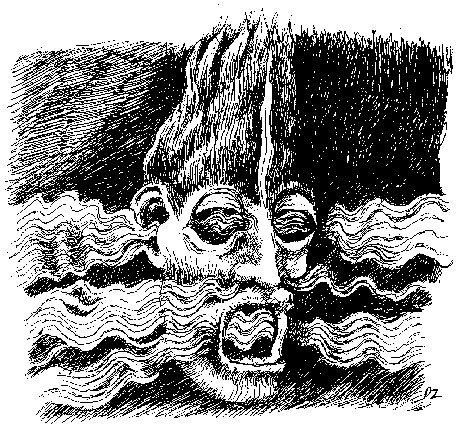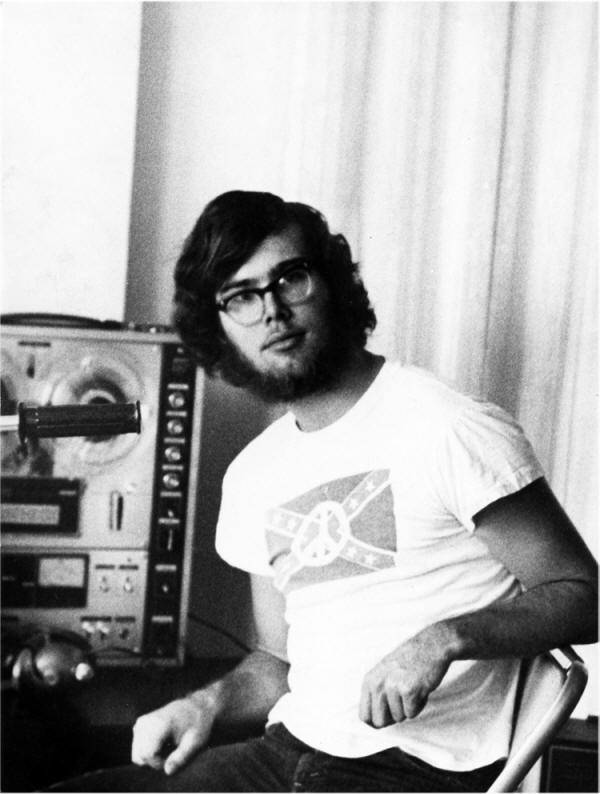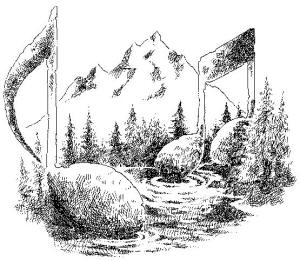|
You are reading the older HTML site
Positive Feedback ISSUE 61
The Higher End: The
Reel-to-Reel (RTR) Movement Rocks! Part, the First: Initial Reflections on the
"…World That Then Was…"
In which our hero meditates… It's amazing times we live in. At the same time that I'm listening to DSD and Double DSD from computer files via USB 2.0 on the Playback Designs MPS-5 with USB-X interface (see my recent "The Higher End" column), with truly unbelievable levels of resolution from DSD download files, I also get to hear state-of-the-art LP playback from the Wave Kinetics NVS turntable/Durand Telos 12" tonearm/Ortofon Anna MC system, and the Walker Audio Black Diamond Proscenium Level III turntable system with its enhanced damping solution… LPs are smokin' hereabouts! Certainly we're seeing the best LP playback in history, with everything from the very best pressings to the best tonearms and cartridges now available. SACD playback via the Playback Designs MPS-5 is, as it has been, a true reference standard for that format (and CDs too, come to think of it). DSD and (especially) Double DSD sets a stratospheric standard for what's possible in that best-of-all-worlds format. High-resolution PCM (88.2kHz - 192kHz, at 24 bits) is also sounding very fine these days, with a number of downloads of great titles at various resolutions available from HDTracks (www.hdtracks.com). Our playback systems for these files include impressive designs from Playback Designs (yes, the MPS-5 and USB-X with the Merging Technologies Emotion Music Server handles PCM as well, out to 384kHz), Cary Audio, Bel Canto, Benchmark, Furutech, and Mytek Digital. Prices vary, but there's something in these for just about any (audiophile) price point… from $1500 to $17,000.
But I can't stop there… no, not at all. For along with everything else that the world of fine audio is having to wrap its collective head around, along comes Reel-to-Reel (RTR) as a format once more. For me, it's like a lover from the long-ago suddenly showing up on my doorstep, unannounced, with that "Remember me?" look on her face. And, you know, she's still so very lovely… Not that the reemergence of open reel tapes is a sudden breakthrough, though; far from it. The suddenness for me is more emotional and musical than literal. For a few years now, RTR has been percolating in the background of high-end audio, a format that shows up at audio shows in some rooms with some truly fine sound. For example, I noted one such room (Von Schweikert/Jolida/United Home Audio) in my RMAF 2011 report back in PFO Issue 58, featuring United Home Audio's excellent Phase9 RTR machine playing some very fine tapes from The Tape Project. The Blue Light Audio room regularly features ATR Services Ampex ATR 102; Luke Manley's VTL room at RMAF 2011 had open reel in evidence. No, RTR has never entirely died away. Over the years, fans of the format have kept open reel alive, through thick and thin, CDs and all. In fact, my love of open reel goes back to my high school days in Walnut Creek, California. I was all of 15 years old at the time, and got deeply hooked on the idea of having an open reel recorder. I had a number of friends who were rock 'n roll and blues musicians; I reckoned that I could have a great time recording their jam sessions.
Ye Young Editor, age 17, with his first RTR, Sao Paulo, Brasil [photographer unknown] You know: in our living room, Rudy Van Gelder style. No control room, though, and no isolation from the music; just yours truly sitting in at one end of the room, big Koss 'phones in place, stomping with the music. Purely a crime of passion. Having some very patient and long-suffering parents, who were willing to put up with some VERY LOUD recording sessions on many weekends, living room all shoved aside…Jerry Woods on a beautiful white Gibson playing lead/rhythm (the kid could play!), Henry White or Mike Niemann on harp, Klaus (just "Klaus") on bass, and the drummer of the week… well, special high-decibel times resulted. Always pretty great music, with sometime drunkenness and stoned band members collapsing in the mix. Nothing that anyone who wasn't there would want to listen to for long, but if you were there… well…. And I still have every one of those tapes. BASF 1.0 mil on 7" reels… not pro-grade stuff that would have been out of my price range. I'd hate to bet my life on whether they've oxidized yet. One of these days I'll have to check that out. Don't know what I'll do if the oxide decides to peel…. Anyway, while the other gents were saving up for cars, I worked for a year to purchase what I could afford: a brand new Sony TC-630. Consumer stuff, for sure, but I was radically pleased! So were my music buds… thus the locally notorious jam sessions at the Robinson's. Later, when we moved to Sao Paulo, Brasil, I carried on the rock 'n roll jam session recordings from time to time. My RTR was the life of the party there. I had brought along several dozen reels of tape from the States, with all sorts of great music taken from LPs in the collection of Dave Bell, my close friend Steve "Moss Man!" Bell's older brother. Of course, that was a fine thing about open reel recorders at the time: you could pile up your own "playlist" of music, which is what I did. Music, music, music… recorded live, or dubbed from a fine little AR turntable. You know, you can do a lot worse than that, amigos. That was the beginning of my passion for RTR, and now you know that story. In college, I would go on to do RTR local on-site recordings and FM radio production work for KLC, the station for Lewis and Clark College. Our team had a weekly 60-minute time slot for our program of local artists and live events. The Editall block, our stopwatch, and our production RTR unit (a Metrotech, as I recall, though we had a Magnecord, as well) became very familiar friends for nearly two years, as we produced our one-hour half-track tapes. My RTR raging lust at that time was the Teac 3340 four-track ¼" recorder… still wouldn't mind having one. And so it went. I drifted out of RTR production work, even if I never lost my love for the format. Over the years, I purchased a Pioneer RT-707 RTR for my 7" reel, ¼" quarter-track tapes (7.5 ips and 3.75 ips), and a Revox B77 Mk. II for 10.5" reels, ¼" tape, and half-track at 15 ips and 7.5 ips. From time to time I would score a pre-recorded open reel tape, but they were very hard to find in the days before eBay. (eBay has made this much easier nowadays. Try going to eBay and using the search phrase "reel-to-reel tape"; you'll see what I mean.) The good stuff was very spendy, and… worse yet… there really weren't any really good open reel recordings around. By "really good," I meant something that was unobtanium on any retail market: half-track, 15 ips, ¼" tapes. IEC equalization preferred, rather than NAB. No Dolby. Yep. Like I said: unobtainium. The problem lay in the fact that the mass production of high-quality open reel tapes was never a paying proposition. Too much equipment, too much time, and too many costs were associated with open reel tapes. The record labels who did involve themselves with tapes spent most of their time finding ways to cut costs and increase profits. Thus they went from early half-track to quarter-track stereo, allowing a doubling of available playback time by doubling the number of tracks from two (stereo in one direction only) to four (two tracks in one direction and then flip the tape over to play back the other two tracks). The playback speeds of commercial open reel tapes for the general public were never the superior 15 ips (much better frequency response and signal-to-noise (S/N) ratio)… it would have been far too expensive. And so most people never had any idea of just how good RTR could be; eventually 3.75 ips would be the final gasp of the format, before it shuffled off to retirement in the face of cassette tapes…which were even smaller in their tape format, and much slower in their transport speed. But hey! They were so easy to use, and had no tics and pops! [Drop curtain.] If we fast-forward past the "perfect sound forever" daze of Red Book CDs, RTR continued to have its own underground, just like LPs, their much bigger brother, did. But whereas LPs were and remain a major (and growing!) niche in audio, RTR has been a much smaller, lonelier hearts club band. CDs undid much of the need for RTR in the public mind… no tics or pops on those little silver devils! ...and so the demand for tape decks began to dry up. By the '90s, RTR was mainly abandoned. There were a number of DIY aficionados who kept the faith, tinkering together machines, or networking with the experienced professionals and technicians who still had the skills to maintain/improve them. But for the most part, the air went slowly out of the tires…. But, as you'll see, our story has a happy ending. Since "Nature abhorreth a vacuum" and all that, the mainly empty RTR space has begun to fill with exceptional music and new tapes! In our next section, we'll take a look at who the players are, and profile what the audiophile options are in this exciting new world of open reel music. Stay tuned, for sure!
|




